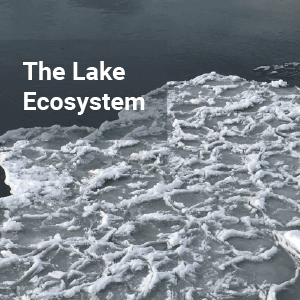Climate Change
Climate Change Adaptation Strategy
There is no doubt that our climate is changing. We have the data to show it and we know that people are feeling its impact. We also know that our approach to climate change adaptation needs to be strategic. That’s why one of our strategic priorities for 2016-2020 was to develop a Climate Change Adaptation Strategy. This strategy reviews the potential impacts of a changing climate on watershed function and recommends changes to our programs and services to ensure they remain effective at protecting the Lake Simcoe watershed in projected future climates.
To do this, we first down-scaled global climate projections to the local level. In other words, we took data about what is happening at the global scale and localized it to our watershed. We also focused our attention and efforts on water quality and quantity, tributary ecosystems (rivers and streams), terrestrial natural heritage (land) and the lake ecosystem. We completed a full assessment of each area, then identified watershed functions that have a ‘high’ or ‘very high’ vulnerability to climate change and developed recommended actions to increase or maintain their resilience.
Our Vision
To enhance the resilience of communities, water resources and natural heritage systems within the Lake Simcoe watershed to climate change.
Goals
- To ensure that people, properties and communities remain sufficiently protected as climate conditions change.
- To increase watershed resistance and resilience to climate change through conservation, restoration, and improvement of natural ecosystems.
- To enhance our knowledge of our watershed’s natural environment and its response to a changing climate through science and monitoring for informed and adaptive decision-making.
- To facilitate partnerships and connect people to the watershed in order to build awareness and capacity to adapt to a changing climate in the Lake Simcoe watershed.
Climate Projections for the Lake Simcoe Watershed
By downscaling global climate models to the Lake Simcoe watershed, we gained a better understanding of how the local climate is expected to change in the coming century.
Data for this exercise was provided by the Climate Change Hazards Information Portal and the Climate Atlas of Canada. These online resources provided climate projections from 25-37 General Circulation Models, downscaled to the Shanty Bay weather station, which has the longest uninterrupted climate data series in the watershed. Two emission scenarios, as identified by the International Panel on Climate Change were used in these models: a high carbon scenario (i.e. RCP 8.5); and a mid-carbon scenario (i.e. RCP 4.5). While the projections were developed based on best-available science, there are always uncertainties. We will ensure an adaptive management approach to monitor and assess the effectiveness of the recommendations and modify as necessary.

Water Quality in our Rivers and Streams
In the Lake Simcoe watershed, the greatest impacts to water quality will be in changes to phosphorus, chloride, and total suspended solids.

Water Quantity
Increased frequency and intensity of rain events, or more frequent snow melt events, can affect all aspects of the water cycle and water movement through the watershed.

Stream and River Ecosystems
Warming water temperatures, reduced snowpack, more frequent drought, and more extreme precipitation patterns will alter habitats for local aquatic species. Since individual species have specific habitat requirements, some species may be able to cope with or even thrive under new conditions, while others may struggle.

The Lake Ecosystem
Lake Simcoe provides watershed residents with many valuable socioeconomic and ecosystem services, including drinking water and wastewater assimilation, tourism, recreation, and irrigation. Unfortunately, climate change is impacting significant aspects of the lake ecosystem, and these important services will be impacted as a result.

Terrestrial Natural Heritage
When natural communities are healthy, resilient, and connected, they form a robust natural heritage system that provides the functions and services upon which we depend. These systems are vital for creating habitat, enabling the movement of species for survival, and maintaining natural diversity. These ecological functions provide valuable ecosystem services.
![]() Who to Contact
Who to Contact
Integrated Watershed Management
✆ 905-895-1281
✆ 1-800-465-0437 Toll free 
Climate Change Adaptation Stategy
Water Quality in our Rivers and Streams
Water Quantity
Stream and River Ecosystems
The Lake Ecosystem
Terrestrial Natural Heritage
Watershed Trends and Predictions (Infographic)
